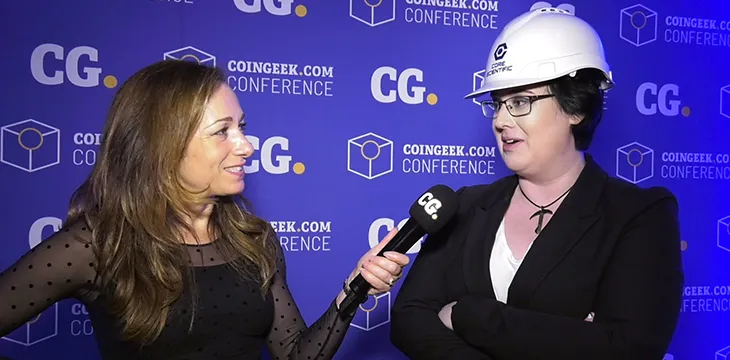|
Getting your Trinity Audio player ready...
|
For Bitcoin to take over the world, first it needs to grow up. In some corners, that’s already happening, but a lot more can be done for adoption to grow and for governments and businesses to take notice. Kristy-Leigh Minehan, Chief Technology Officer (CTO) of Core Scientific, joined CoinGeek.com’s Becky Liggero to discuss what she thinks Bitcoin needs.
The first big step towards global adoption needs to be greater attention from governments. “So Bitcoin needs to become regulated,” Minehan told us. “It needs to become something that governments can verify. It needs to become some kind of regulated standard, just like the U.S. dollar. It actually needs to become backed by the U.S. dollar or, you know, it needs to become a replacement for the U.S. dollar.”
The reason Minehan is so emphatic about the need for Bitcoin to become a standard is because of what it was envisioned to be. “If people are going to use this technology, they need to treat it like what it is, which is cash,” she said. “It’s a form of cash. Part of my presentation was the fact that money is history but Bitcoin is the future.”
The next important step is for Bitcoin to get past the technical hurdles and annoyances that it has been mired in the past, and become an easy to use application. “So, Bitcoin, like blockchain, is going to be very similar to the relational databases of 1975, in that, we’re not actually going to see this technology on the surface, but it’s going to be there and it’s just going to make our lives a seamless experience,” the CTO said. “So I think a lot of banks are going to start using blockchain specifically for being able to replace SWIFT codes. That’s a very new and exciting field, and I personally am excited after coming to the US and dealing with the banking system there, I’m excited just to not have to pay $35 for a damn wire transfer. Like, holy hell!”
For that to happen, developers need to make it easy for the banks. “They need companies, trusted U.S. backed entities or publically backed entities from Canada, from the U.S., from Switzerland, etc., to walk them through how they do this, to actually build the applications for them,” she explained. “In that way, we’ve also solved the liability problem. So if the technology doesn’t work, banks can actually point at the businesses and say ‘Hey, this technology doesn’t work. You’re at fault.’ They don’t start blaming the underlying infrastructure of blockchain or Bitcoin, which is important.”
Once the government and banks are on board, businesses are the next step, and again its about making the experience easy. “Just approach them, explain how it can save costs, cut out overhead, walk them through the entire process, package it into some neat little present, give it to them,” Minehan said. “They’ll start to adopt it. They’ll jump on it actually.”
The final step to adoption is the public, and again, it’s about providing them an easy to use product that doesn’t hassle them with the underlying technology. “users don’t care how technology works,” she notes. “You don’t care how your mobile phone works, you just care that you can look at Facebook on it, or you can use Twitter or you can take some photos. You just care about the application space. We’ve got to treat Bitcoin and blockchain the same way.”
If you’re already a few steps ahead, and have embraced Bitcoin SV (BSV), the only coin that is following the original vision of Satoshi Nakamoto, why not join the CoinGeek Toronto conference. It’s easy to register, and you can save money on your entrance by using Bitcoin SV with Coingate.

 07-14-2025
07-14-2025 





